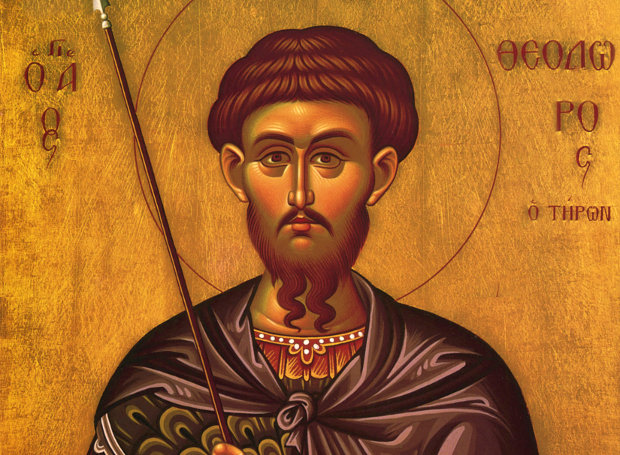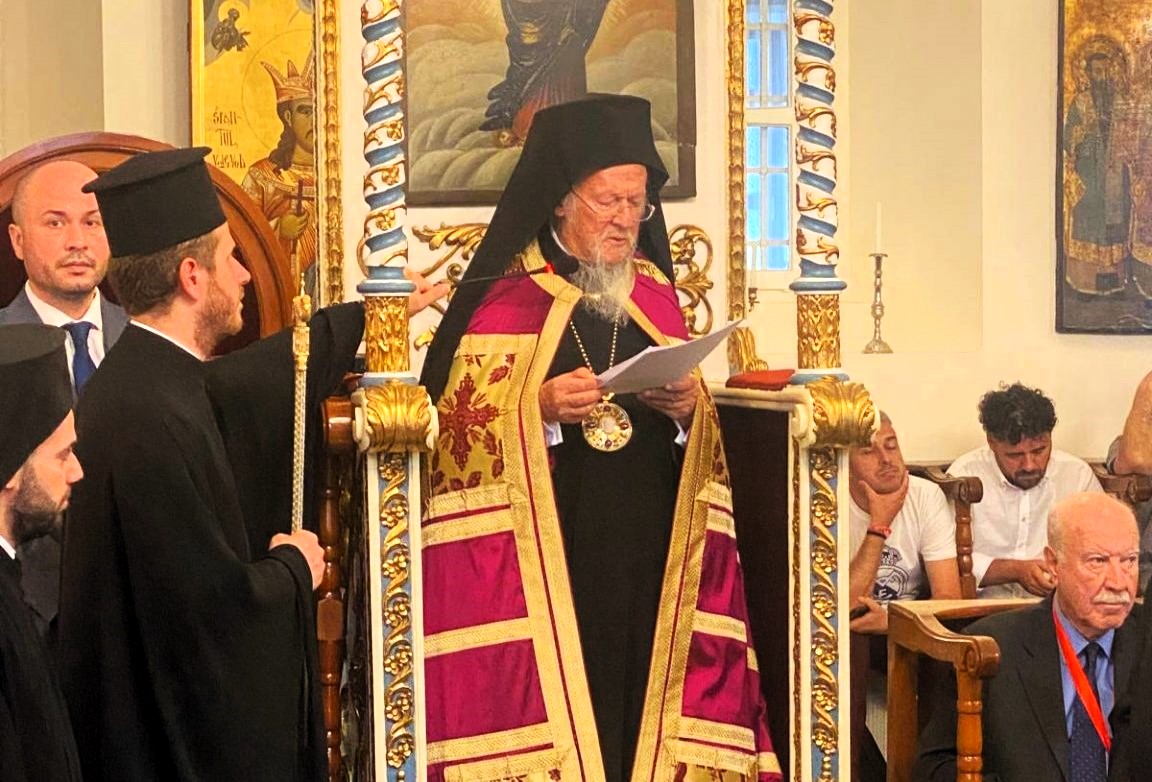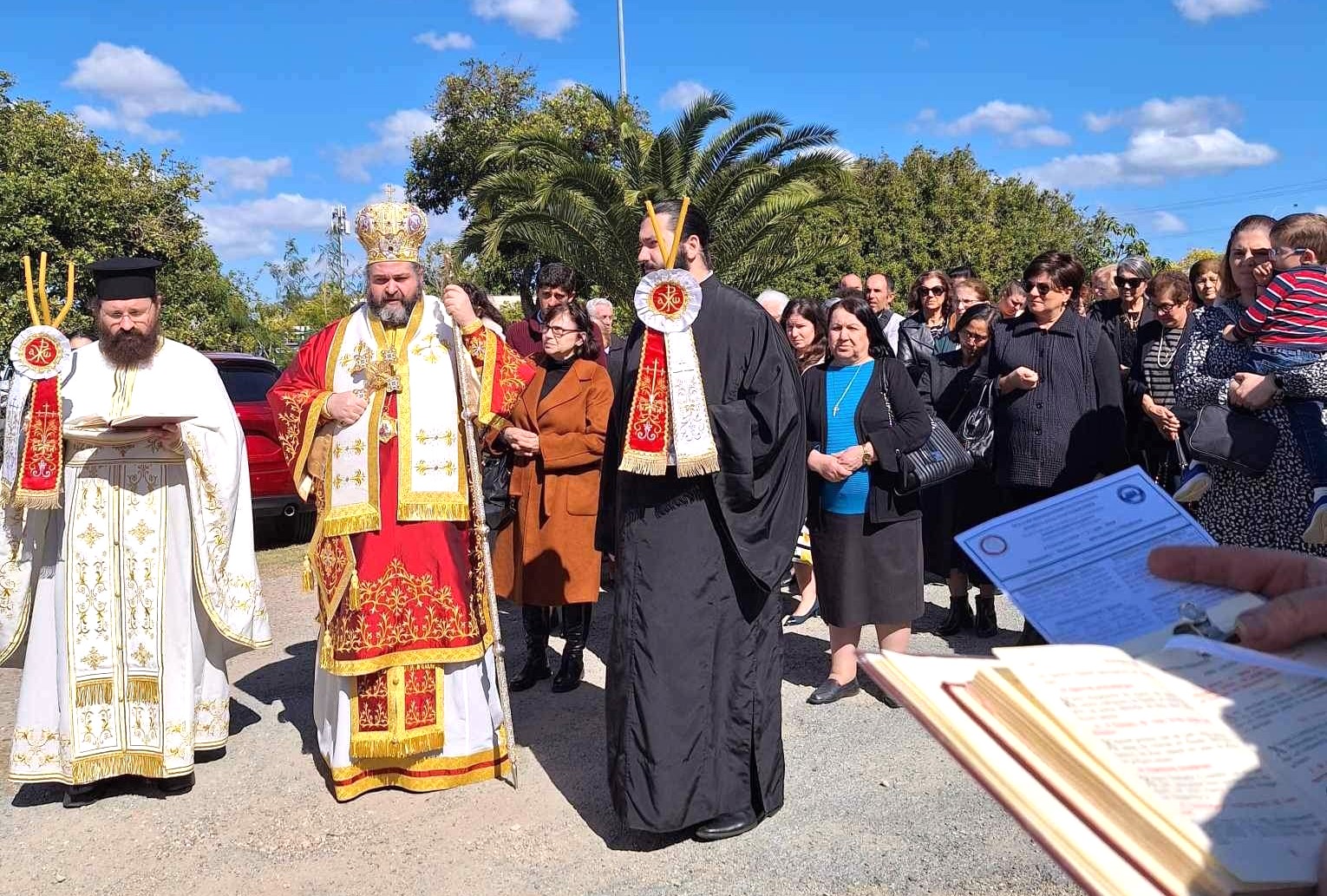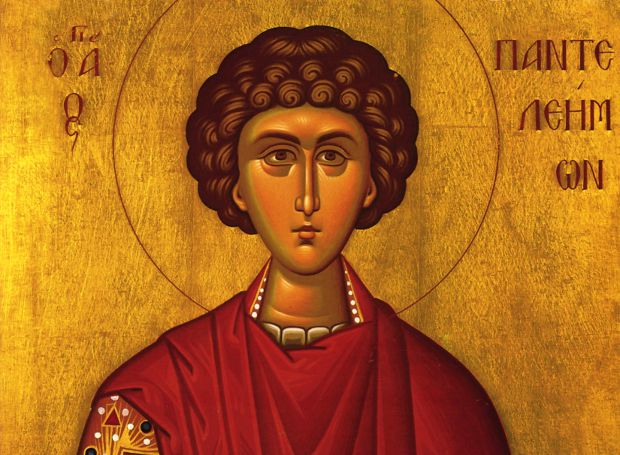Great Martyr Theodore the Tyro (Recruit) (17 February)


The Holy Great Martyr Theodore the Recruit1 was a soldier in the city of Amáseia in Pontus (Asia Minor) on the coast of the Euxine (Black) Sea, under the command of the Praepositus (regimental commander) Brincus. Saint Theodore was ordered to offer sacrifice to idols, but he proclaimed his faith in Christ the Savior in a loud voice. Brincus gave him a few days to think it over, during which time the Saint prayed.
Theodore was accused of setting a pagan temple on fire and destroying the idol of Rhea, and so he was thrown into prison to be starved to death. The Lord Jesus Christ appeared to him there, comforting and encouraging him. When he was brought before the Governor Publius, Theodore boldly confessed his faith, for which he was subjected to new torments and condemned to be burnt alive. The Great Martyr Theodore mounted an enormous pyre, and after he made the Sign of the Cross, the wood was lit, but the Holy Spirit cooled the flames. Saint Theodore stood in the flames, praising and glorifying God. Then he gave his holy soul into God’s hands, and the onlookers saw his soul ascending to Heaven, according to the author of his Life, who was also an eyewitness.
This occurred in about the year 306 under the Roman Emperor Galerius (305-311). Unharmed by the fire, Saint Theodore’s body was buried under a widow’s house in the city of Eukháϊta, not far from Amáseia. Later, his relics were transferred to Constantinople, to the church which bears his name. His head is in the city of Gaeto, Italy.
Fifty years after the Saint Theodore’s martyrdom, Emperor Julian the Apostate (reigned 361-363), planned to commit an outrage upon the Christians during the first week of Great Lent. He ordered the city magistrate of Constantinople to sprinkle all the food in the marketplaces with blood which had been offered to idols. Saint Theodore appeared to Archbishop Eudoxios in a dream, and told him to inform all the Christians that no one should buy anything in the marketplaces, but to eat boiled wheat with honey (kolyva) instead.
In remembrance of this occurrence, the Orthodox Church commemorates the holy Great Martyr Theodore the Recruit each year on the first Saturday of Great Lent. On Friday evening, at the Divine Liturgy of the Presanctified Gifts, after the prayer at the Ambo, the Canon to the Holy Great Martyr Theodore, composed by Saint John of Damascus, is sung. After this, kolyva is blessed and distributed to the faithful. The celebration of the Great Martyr Theodore on the first Saturday of Great Lent was established by Patriarch Nektarios of Constantinople (381-397).
The Troparion to Saint Theodore is very similar to the Troparion for the Prophet Daniel and the Three Holy Youths (on the Sunday Before the Nativity of the Lord). The Kontakion to Saint Theodore, who suffered martyrdom by fire, reminds us that he also had faith as his breastplate (see I Thessalonians 5:8).
In iconography, Saint Theodore the Recruit is depicted in four different ways: eiither alone in military garb, battling a large snake, or together with Saint Theodore the Commander, standing upright or riding horses. He always wears his military uniform.
We pray to Saint Theodore the Recruit for the recovery of stolen articles.
1 His title comes from the Latin word tiro, because he was a newly-enlisted recruit, not because he came from the city of Tyre, as some misinformed persons imagine.
Saint Theodore who was from Amasia of Pontus, contested during the reign of Maximian (286-305). He was called Tyro, from the Latin Tiro, because he was a newly enlisted recruit. When it was reported that he was a Christian, he boldly confessed Christ; the ruler, hoping that he would repent, gave him time to consider the matter more completely and then give answer. Theodore gave answer by setting fire to the temple of Cybele, the “mother of the gods,” and for this he suffered a martyr’s death by fire. See also the First Saturday of the Fast.
The word Tyro means recruit. As soon as Theodore entered the army in the Marmarite regiment in the town of Amasea, the persecution of Christians began under the Emperors Maximian and Maximus. As Theodore did not try to conceal the fact that he also was a Christian, he was dragged to court and thrown into prison, which was then locked and sealed because the wicked judge wanted him to die of starvation. The Lord Christ Himself appeared to Theodore in prison and encouraged His martyr, saying to him: “Fear not Theodore, I am with you. Do not partake of earthly food and drink anymore, for you will be with Me in the other world in the heavens–eternal and everlasting.”
At that moment there appeared a multitude of angels in the prison, and the entire prison shone brightly. The guards, seeing angels dressed in white raiment, became terrified. After that, St. Theodore was taken out, tortured and condemned to death. Theodore was thrown into a fire and gave up his holy soul to the Most-high God. He suffered in the year 306 A.D.
Apolytikion of Great Martyr Theodore the Tyro
Second Tone
Great are the achievements of faith! In the fountain of flame, as by the water of rest, the holy Martyr Theodore rejoiced; for having been made a whole-burnt offering in the fire, he was offered as sweet bread unto the Trinity. By his prayers, O Christ God, save our souls.
Kontakion of Great Martyr Theodore the Tyro
Fourth Tone
Having received the Faith of Christ in thy heart as a breastplate, thou didst trample upon the enemy hosts, O much-suffering champion; and thou hast been crowned eternally with a heavenly crown, since thou art invincible.
Source: oca.org / goarch.org / westserbdio.org




